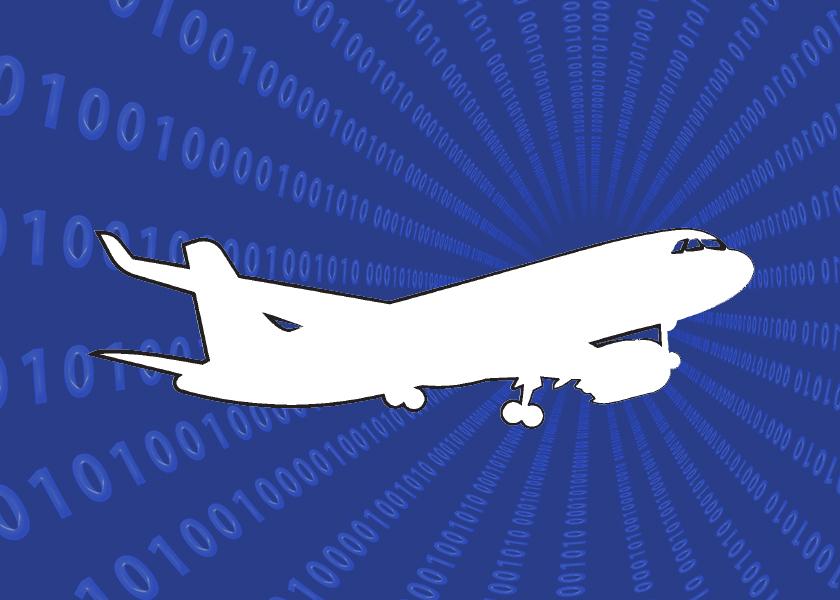Will Ag's "Technical Debt" Lead to A Southwest-Type Meltdown?

This past holiday season, Southwest Airlines tried its best to recreate the classic ’80s comedy “Planes, Trains and Automobiles.” Only this time, it tried to do it without the planes!
You know how they say the sequel is never as good or as funny as the original production?
It was a “perfect storm” of cascading events that forced the airline to cancel over 15,000 flights during the Christmas and New Year’s holidays. It has become known as the “Southwest Meltdown,” and even though this crisis has passed, many Monday morning quarterbacks are still adding their takes to the growing pile of criticism and analysis.
Out of the gate, Southwest’s first scapegoat was naturally the weather. Funny, those who work for airlines may be the only people who even come close to farmers for blaming Mother Nature for, well, just about everything.
Further investigation is beginning to reveal many layers to this rotten onion. Failure to invest in “technology” at all levels of the company—for years if not decades—is starting to emerge as the root cause of Southwest’s holiday disaster. This meltdown was big enough to seemingly serve as a watershed wake-up call to businesses and business leaders far beyond the airline industry.
A Wake-up Call For Agriculture?
On its public face, mainstream agriculture loves to tell its technology story. The transformation of “Old MacDonald’s Farm” into a modern wonder with tractors that drive themselves and corn plants that genetically defend themselves against pests is a reality that would make even sci-fi novelists such as Jules Verne proud. Unfortunately, when one takes off agriculture’s rose-colored glasses, the reality is much of the industry’s technology is being held together with digital duct tape and baling wire.
Such a blunt and sobering assessment is backed up by multiple studies and surveys. A McKinsey Global Institute study recently placed agriculture absolutely dead last in terms of the industry’s state of digitization. What should be more sobering to those of us in agriculture is that same study ranked the transportation industry in the middle of the pack when it comes to the same metrics. Sadly, even with all its technology problems, Southwest is probably still further ahead than most of its agriculture counterparts.
Want More Evidence?
A 2021 farmer survey by Farm Journal’s Trust in Food revealed 62% of respondents still do not use any type of farm management software system to store and manage their operations data. The majority are still “getting by” with mostly pen and paper or an updated version of Microsoft Excel, which was first introduced in 1985.
So where did Southwest fall short in terms of technology that literally paralyzed the company for more than a week? The primary finger seems to point to an antiquated software scheduling system with origins back to the 1990s. When things started spinning out of control the day before Christmas, it was as if Southwest lost all visibility into where their planes and people were. The system is so old that when a flight is cancelled or delayed, pilots and flight attendants have to manually call in to let the company know where they are. Reports indicate some employees—not customers—were on hold for as long as 17 hours. Even when the skies cleared and planes and people were both physically in the same place, Southwest still couldn’t put Humpty Dumpty back together.
Let That Sink In For A Moment
How is it you as a passenger can get off a plane and order an Uber ride from your GPS-enabled smartphone—plus see the car’s make and model, where it is, when it will arrive at your location and the drivers name—and Southwest cannot find a 45-ton airplane or a pilot to fly it?
Harvard Business School types would characterize Southwest as a company with a huge amount of “technical debt”—considered gaps between what the software and technology need to be and what they are today. But Southwest is not alone when it comes to such shortcomings. Southwest’s challenges were just big enough to make a difference, and combined with fate and a bored media, those shortcomings caught up with the carrier at the worst possible time.
Agriculture also carries “technical debt.” For example, the precision agriculture revolution is now more than 30 years in the rearview mirror. Many of those legacy systems are still used on farms today. Then, consider that one of the most prolific precision ag softwares used today is a PC desktop-driven software introduced at the turn of the century.
Can We Avoid Our Own Grounding?
Could the reason a majority of farmers do not utilize some form of business software stem from it simply being too hard to get data into these systems in the first place? In reality, precision ag in many cases has become a stale mishmash of data collection technology that now generates data in an expanded potluck menu of incompatible formats. Could this be why more modern software as a service, such as Granular, died on the vine? The evidence is awfully incriminating.
The Threat Is Real
To say agriculture will have a technological meltdown equal to the magnitude of Southwest’s is probably just Chicken Little talking. More likely, we may experience perpetual streams of minimeltdowns that come in forms such as ransomware attacks on meat processing plants or large agricultural cooperatives. However, the biggest threat to agriculture regarding technology will likely come from within. That’s because though consumer demands and the world have sped up, agriculture collectively is not keeping up on its treadmill of innovation.
A reactionary approach to adopting technology throughout the agriculture industry makes it impossible to deliver what the marketplace demands today. Climate-smart commodities, carbon markets and the digital transparency involved in tracking food through the supply chain are all at risk. Southwest rested on its laurels. Will agriculture do the same, or will we roll up our sleeves and get to work?







